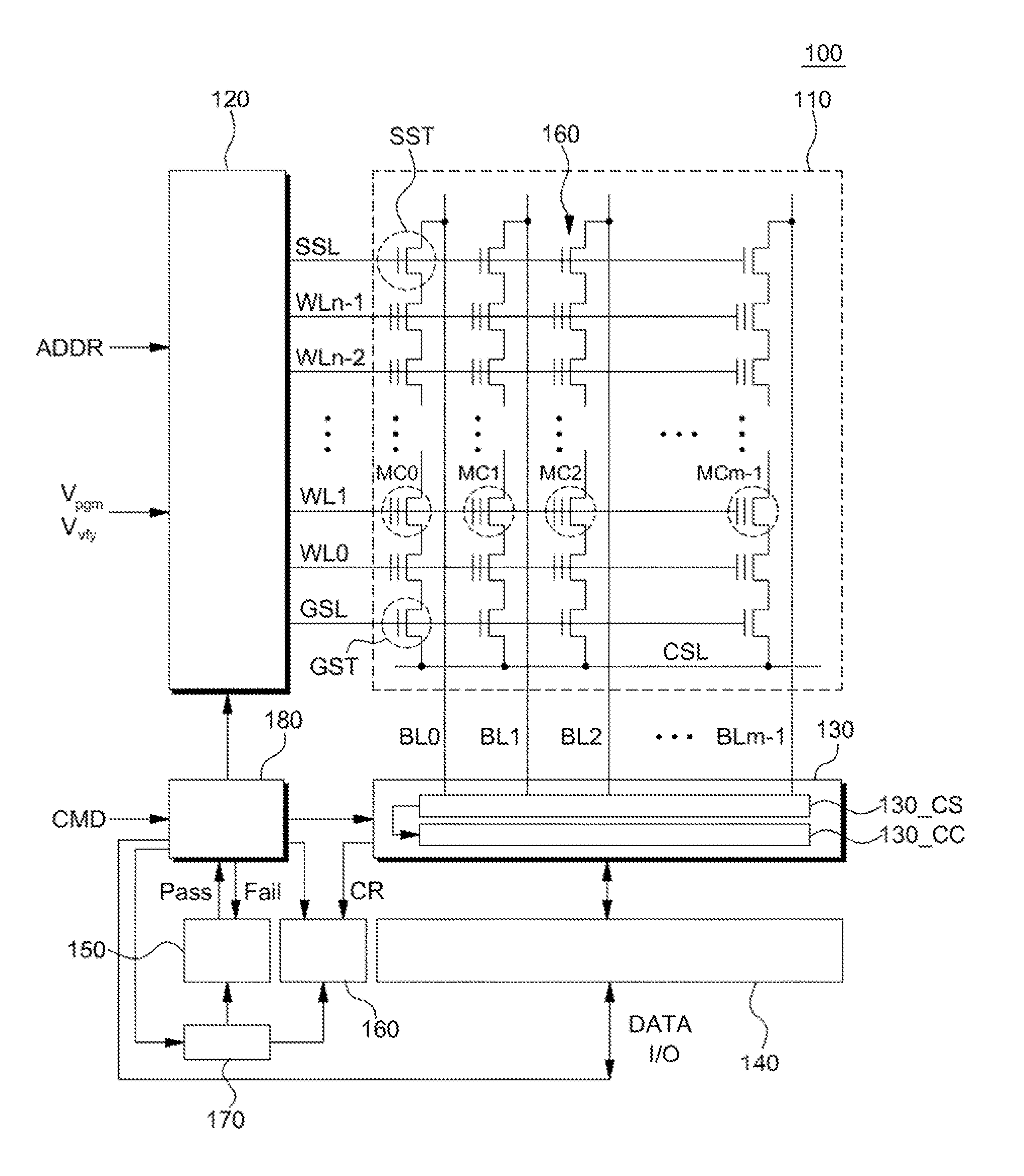Data storage device and method of programming memory cells
a data storage device and memory cell technology, applied in static storage, digital storage, instruments, etc., can solve the problems of chip failure in later read operations, difficulty in detecting defective memory cells, performance deviations that may easily occur between memory cells, etc., to improve programming speed and data reliability, and efficiently detect defective memory cells
- Summary
- Abstract
- Description
- Claims
- Application Information
AI Technical Summary
Benefits of technology
Problems solved by technology
Method used
Image
Examples
Embodiment Construction
[0038]The inventive concept will now be described more fully with reference to the accompanying drawings, in which exemplary embodiments of the Inventive concept are shown.
[0039]The inventive concept may, however, be embodied in many different forms and should not be construed as being limited to the embodiments set forth herein; rather these embodiments are provided so that this disclosure will be thorough and complete, and will fully convey the concept of the inventive concept to one of ordinary skill in the art. Meanwhile, the terminology used herein is for the purpose of describing particular embodiments only and is not intended to be limiting of exemplary embodiments.
[0040]Also, thickness or sizes of layers in the drawings are exaggerated for convenience of explanation and clarity, and the same reference numerals denote the same elements in the drawings. As used herein, the term “and / or” includes any and all combinations of one or more of the associated listed items.
[0041]The t...
PUM
 Login to View More
Login to View More Abstract
Description
Claims
Application Information
 Login to View More
Login to View More - R&D
- Intellectual Property
- Life Sciences
- Materials
- Tech Scout
- Unparalleled Data Quality
- Higher Quality Content
- 60% Fewer Hallucinations
Browse by: Latest US Patents, China's latest patents, Technical Efficacy Thesaurus, Application Domain, Technology Topic, Popular Technical Reports.
© 2025 PatSnap. All rights reserved.Legal|Privacy policy|Modern Slavery Act Transparency Statement|Sitemap|About US| Contact US: help@patsnap.com



